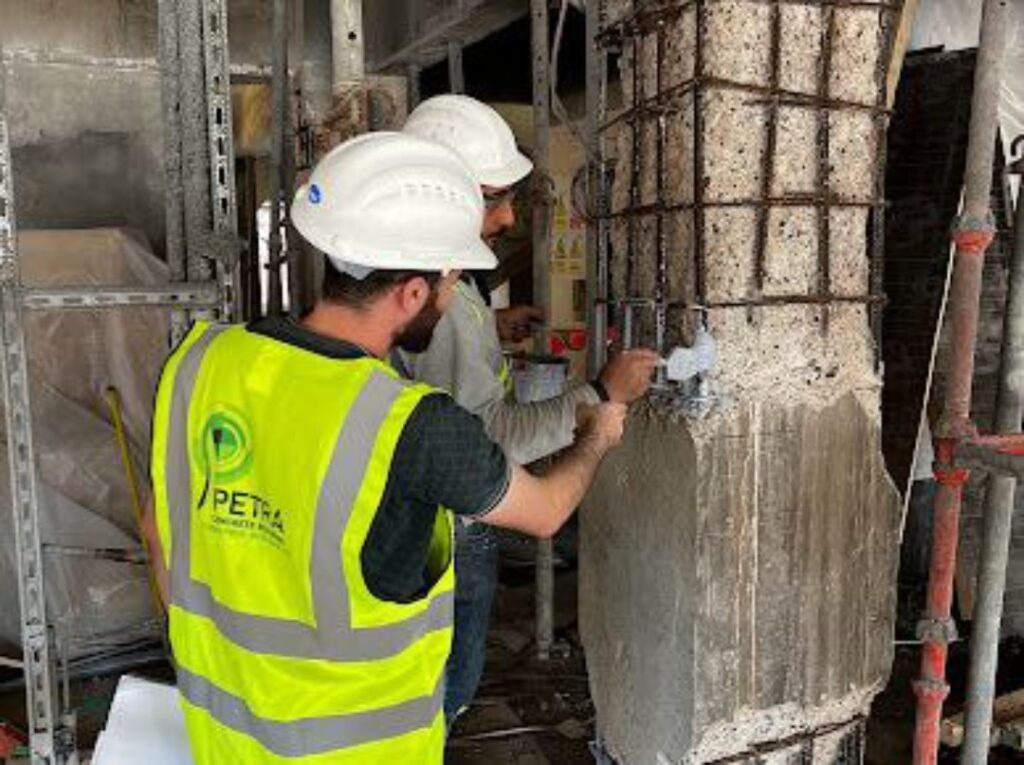
CONCRETE JACKETING
THE BENEFITS OF CONCRETE JACKETING
Increased structural strength: Concrete jacketing enhances the load-carrying capacity and structural strength of existing elements. By adding a layer of concrete, the structural member is reinforced, allowing it to bear higher loads and resist external forces more effectively.
Structural rehabilitation: Concrete jacketing is commonly used to rehabilitate deteriorated or damaged structural elements. It can repair and restore the original strength and integrity of the element, eliminating the need for complete replacement and reducing construction time and costs.
Improved seismic resistance: Concrete jacketing enhances the seismic performance of existing structures. It improves their ability to withstand lateral forces and ground motion during earthquakes. By adding an additional layer of concrete, the structure’s overall stiffness and ductility are increased, reducing the risk of structural failure during seismic events.
Fire resistance: Concrete jacketing provides increased fire resistance to structural elements. The additional layer of concrete acts as a fire barrier, protecting the underlying material from heat and flame exposure. This is particularly important in buildings and structures where fire safety is a priority.
Enhanced durability: Concrete jacketing protects existing elements from environmental factors, such as moisture, chemicals, and abrasion. The new layer of concrete acts as a protective barrier, reducing the penetration of damaging agents and extending the service life of the structure.
Improved aesthetics: Concrete jacketing can be applied to enhance the appearance of existing structures. The new layer of concrete can be finished, textured, or colored to match the desired architectural aesthetics or to provide a fresh and uniform appearance.
Minimal disruption: Concrete jacketing can be performed without major alterations or demolition of the existing structure. This minimizes disruption to ongoing activities within the building and reduces downtime during the rehabilitation process.
Cost-effective solution: Concrete jacketing is often a cost-effective alternative to complete structural replacement. By reinforcing and rehabilitating existing elements, it eliminates the need for extensive demolition and reconstruction, resulting in significant time and cost savings.
Sustainability: Concrete jacketing promotes sustainability by extending the service life of existing structures. It reduces the need for new construction and the associated consumption of resources and energy, leading to a lower environmental impact.
Compliance with codes and standards: Concrete jacketing helps bring existing structures into compliance with updated building codes and standards. It allows older structures to meet current safety and performance requirements without requiring a full rebuild.
